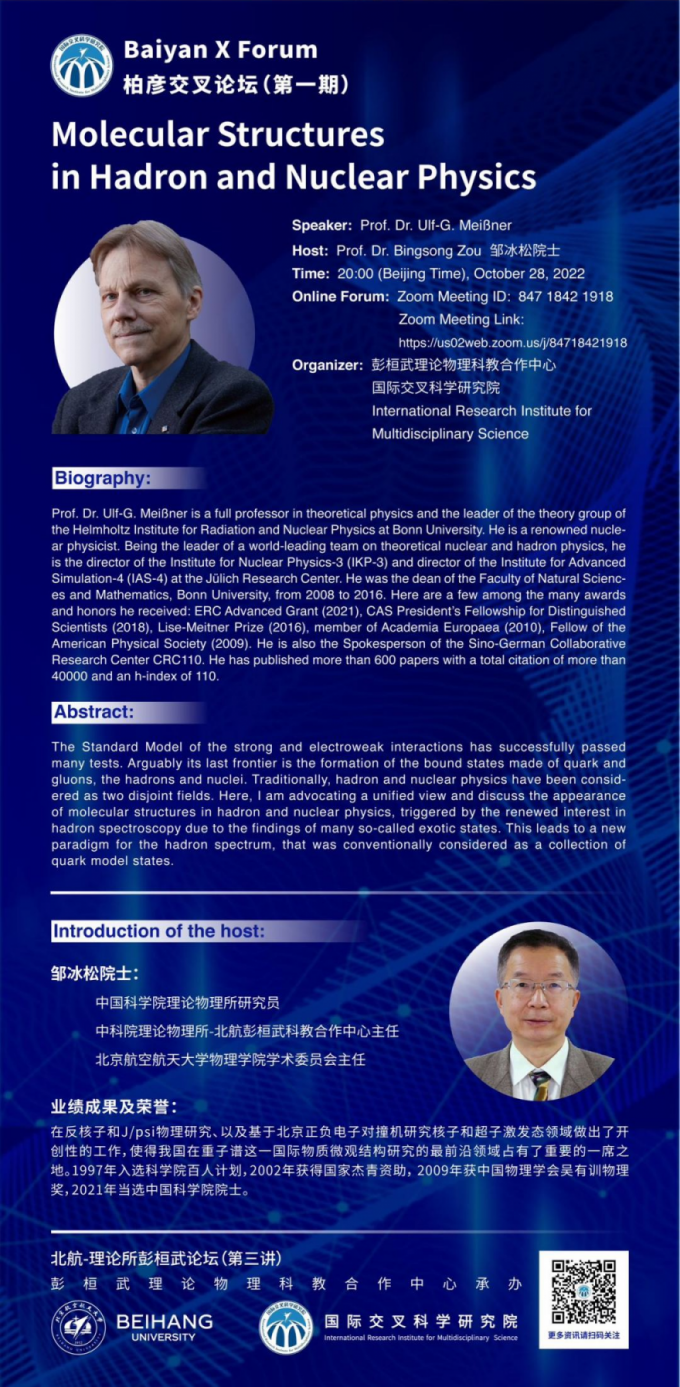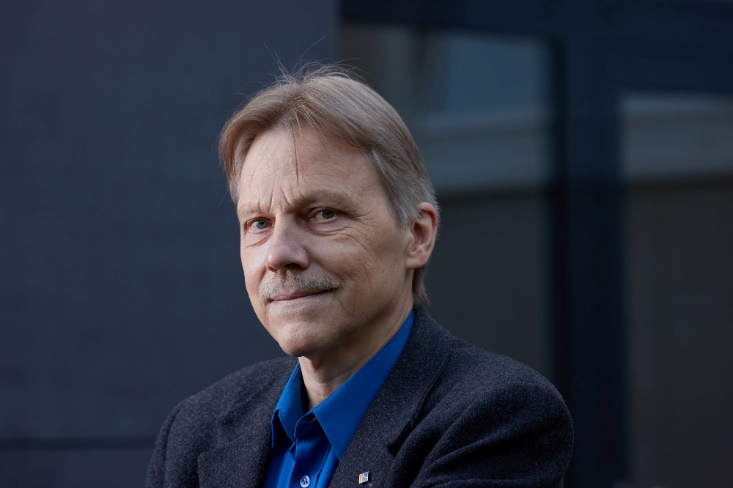

beat365英国官网网站70周年校庆系列学术活动
Baiyan X Forum(Keynote 1)
柏彦交叉论坛(第一期)
论坛主题:
Molecular Structures in Hadron and Nuclear Physics
报告专家:
Prof. Dr. Ulf-G. Meißner, Professor at Bonn University & Director at the Jülich Research Center
论坛时间:
2022年10月28日20:00(北京时间)
参会形式:
Zoom Meeting ID: 847 1842 1918
会议链接:
https://us02web.zoom.us/j/84718421918
主办单位:
beat365英国官网网站国际交叉科学研究院
特邀主持人:邹冰松院士

中国科学院理论物理所研究员
中科院理论物理所-北航彭桓武科教合作中心主任
beat365英国官网网站物理学院学术委员会主任
业绩成果与荣誉:
在反核子和J/psi物理研究、以及基于北京正负电子对撞机研究核子和超子激发态领域做出了开创性的工作,使得我国在重子谱这一国际物质微观结构研究的最前沿领域占有了重要的一席之地。1997年入选科学院百人计划,2002年获得国家杰青资助, 2009年获中国物理学会吴有训物理奖,2021年当选中国科学院院士。
报告专家简介:

Prof. Dr. Ulf-G. Meißner is a full professor in theoretical physics and the leader of the theory group of the Helmholtz Institute for Radiation and Nuclear Physics at Bonn University. He is a renowned nuclear physicist. Being the leader of a world-leading team on theoretical nuclear and hadron physics, he is the director of the Institute for Nuclear Physics-3 (IKP-3) and director of the Institute for Advanced Simulation-4 (IAS-4) at the Jülich Research Center. He was the Dean of the Faculty of Natural Sciences and Mathematics, Bonn University, from 2008 to 2016. Here are a few among the many awards and honors he received: ERC Advanced Grant (2021), CAS President’s Fellowship for Distinguished Scientists (2018), Lise-Meitner Prize (2016), member of Academia Europaea (2010), Fellow of the American Physical Society (2009). He is also the Spokesperson of the Sino-German Collaborative Research Center CRC110. He has published more than 600 papers with a total citation of more than 40000 and an h-index of 110.
论坛简介:
The Standard Model of the strong and electroweak interactions has successfully passed many tests. Arguably its last frontier is the formation of the bound states made of quarks and gluons, the hadrons and nuclei. Traditionally, hadron and nuclear physics have been considered as two disjoint fields. Professor Ulf-G. Meißner advocates a unified view and in the keynote presentation, he discussed the appearance of molecular structures in hadron and nuclear physics, triggered by the renewed interest in hadron spectroscopy due to the findings of many so-called exotic states. This leads to a new paradigm for the hadron spectrum, that was conventionally considered as a collection of quark model states.